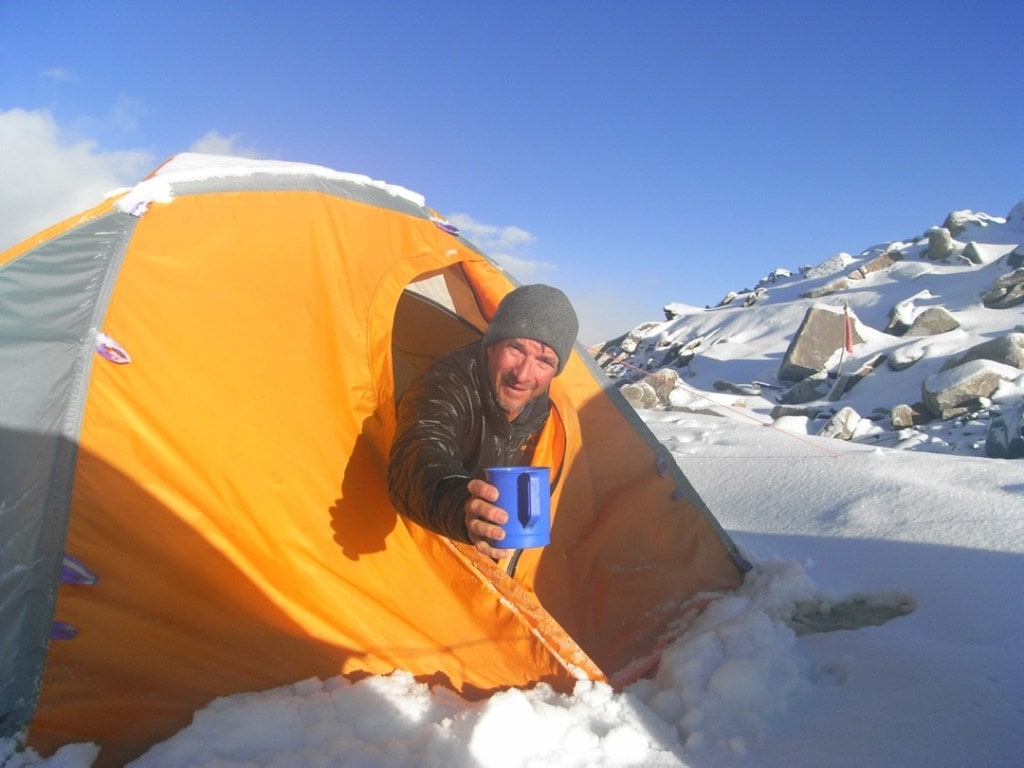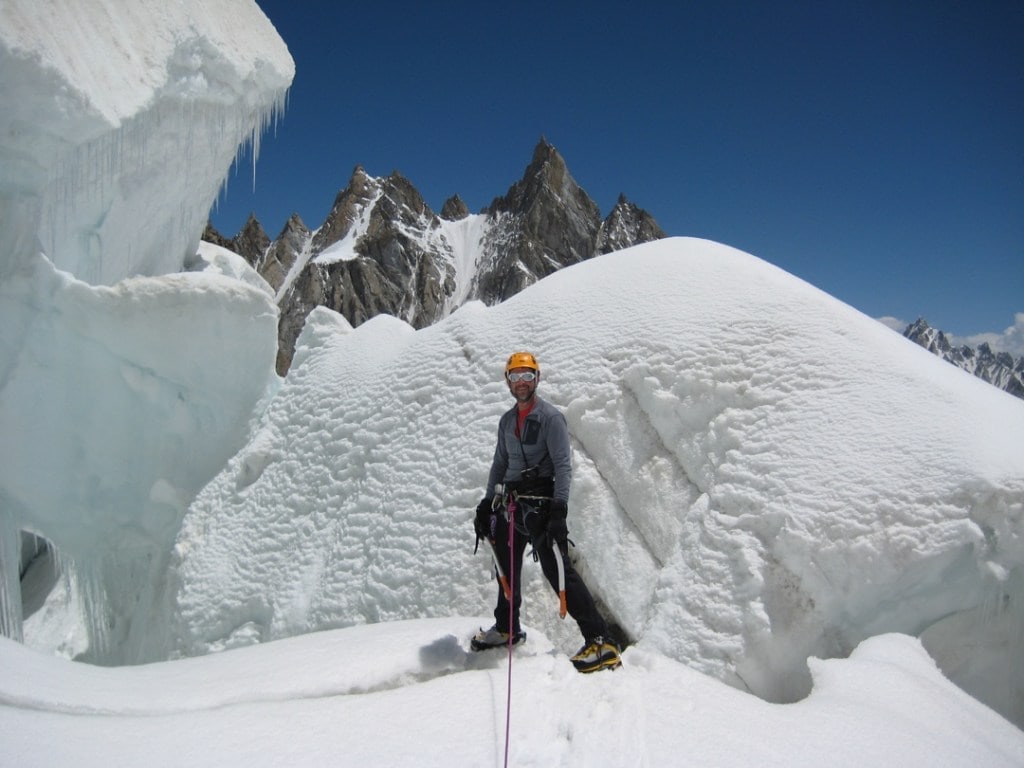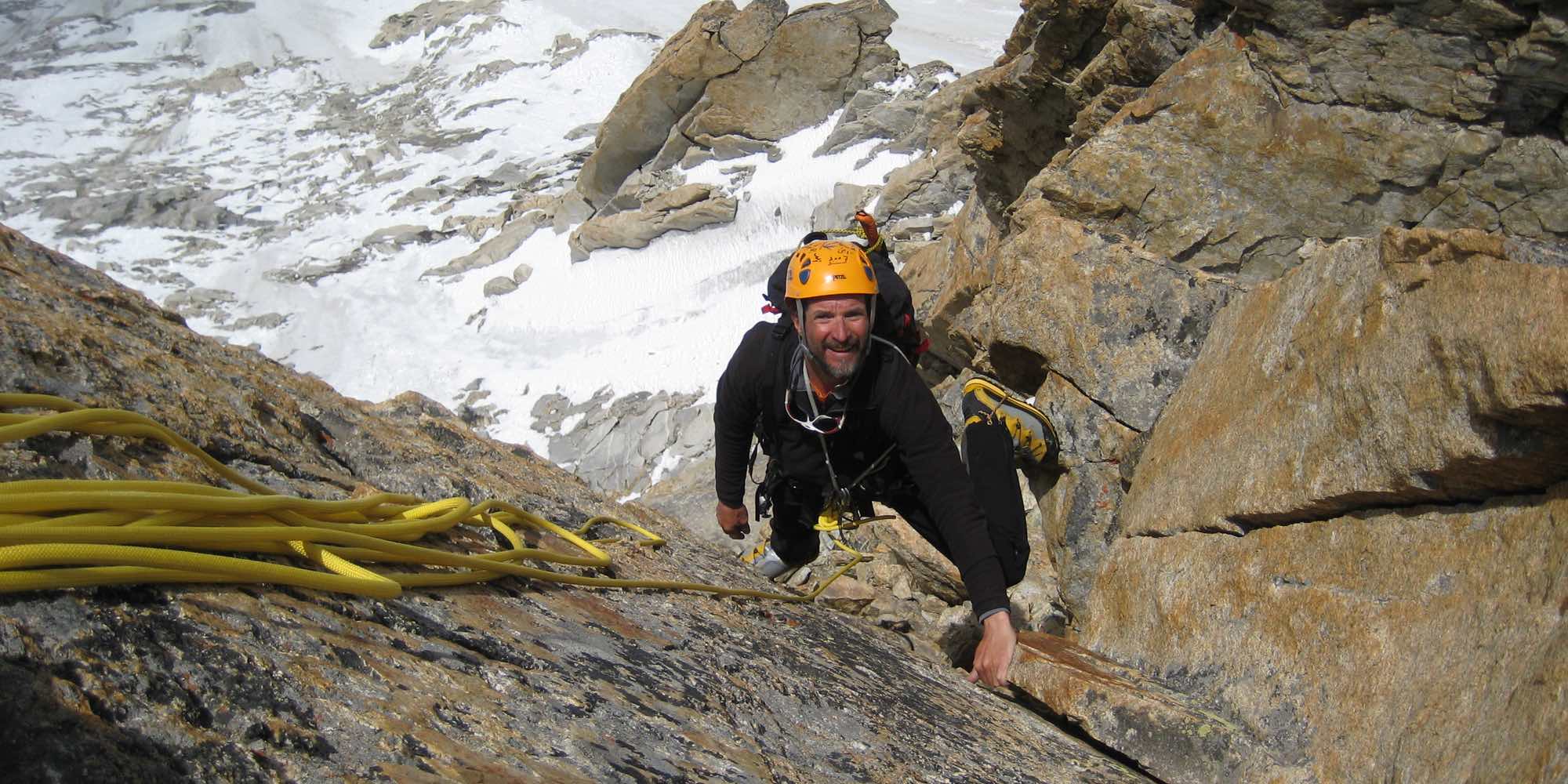Few climbers, or athletes of any sort, can match alpinist Steve Swenson’s longevity and success. He’s been climbing consistently for half a century, making more than 50 major expeditions around the globe. In the ’80s and ’90s, his adventures to the world’s highest peaks included a solo ascent of Mount Everest and climbing K2 from the then-remote northern side—both ascents without supplemental oxygen. After that, he focused on smaller, more nimble expeditions and technically challenging alpine objectives in Alaska, China, India, Nepal, Pakistan and Patagonia, on top of regular climbing outings in the Lower 48 and Canada.
As far back as 1997, Swenson received a lifetime achievement award from the American Alpine Club (AAC)—but he didn’t stop there. He went on to receive the 2012 Piolet d’Or, the prestigious French award for the year’s finest alpine ascent worldwide; served as the AAC president; and continued climbing at a seemingly indefatigable level. Swenson, who splits time between Seattle and Canmore, Alberta, also built a career as an engineer and raised a family. This year he officially became a senior citizen—“Now I get discounts on everything,” he says. But this summer, nearly 40 years after his first expedition to Pakistan, he’s returning to attempt an unclimbed 7,000-meter peak. On top of it all, Swenson’s 2017 memoir, Karakoram: Climbing Through the Kashmir Conflict, was recently honored for the year’s best literature by The Himalayan Club. We asked Swenson what he’s learned from his deep and wide climbing career—and what younger climbers can glean from someone who has lived such a full life.

You’ve had an amazing career, and at 65 you’re still cranking at the crags and going on expeditions. What keeps you going?
Probably the easiest answer is just that I love the mountains. When I got up yesterday morning here in Canmore, it was too cold to go ice climbing—it was minus 33 degrees Celsius, and the high was supposed to reach minus 15. So I went ski touring in simple terrain, by myself. Just driving down the highway, seeing the mountains and looking at morning light, I get this feeling inside of me—I feel so lucky to be here.
But not many people your age are still getting after it the way you are. As far back as the late ’90s you were looking to younger climbers as partners—in your book you write specifically of climbing with Steve House, then in his 20s, and one of many younger partners to follow. What’s that like?
If you want to keep climbing as you get older, you have to climb with younger people. That’s just a fact of life. Accept that they might think differently than you, be OK with that, and see what you can learn from each other. You can’t go in thinking you’re a know-it-all, because you’re not. My younger partners are way better climbers and stronger than me. They also know about the latest gear and systems, and bring a fresh look to everything. I’m still fit enough to keep up pretty well, and I have a lot more experience, so when we’re making difficult decisions they know I’ve probably been in a similar situation. They don’t have to spend 10 years making all the same mistakes themselves, from common ones related to logistics, local politics and staying healthy, to simply underestimating the size and complexity of the mountains in the great ranges.
It seems like there are a lot of positives to these multigenerational relationships, and still, you’re from a different era. What are some of the biggest changes you’ve seen in climbing?
People learn completely differently. When I first started, the skill set you learned was a mile wide and an inch deep, across the entire landscape—the basics about being in the outdoors included learning to build a snow cave, moving efficiently in fourth-class terrain, glacier travel. A little on how to navigate, how to dress for different conditions. As you gained experience, then you’d become active in specific mediums: mountaineering, waterfall ice, rock, expeditions. You kept layering on more knowledge. At my age, I’ve had situations with younger people where they were so good technically, but suddenly they’d encounter something basic—to me—that they don’t know how to do, and it really surprised me. I assumed that since they know all about X, they must know Y. But then I realized, whoa, they didn’t grow up the same way I did.

When considering younger climbers and the critical decision-making in these wild, beautiful, dangerous mountains, what is the most valuable thing you can impart?
It’s all about playing the long game—taking joy in that process of learning, in understanding what it takes to be successful in these complex environments. People let their desire exceed their capability—it’s dangerous, and they’re also cheating themselves. That feeling of getting better each time, of gaining knowledge, is something I’ve really enjoyed, and ultimately it leads to success. The process leads to joy.
Speaking of joy, you’ve experienced immeasurable highs, but there’s a downside to everything, no?
We play a dangerous game, experiencing nature like this. We’re not observers standing below, looking from a distance. We’re participants in the mountains. Losing people to the mountains is really the lowest low. These are people who share the same enthusiasm, are part of our community, and sometimes it’s just hard to accept that they’re gone. You miss them.
How do you make sense of such deep losses?
One of the things that has stayed with me is an idea from Alan Lightman that faith in a larger context goes beyond what some people attribute to a belief in God. It’s a willingness to turn yourself over to the knowledge that there are things in this world that we don’t understand and we will never understand. A lot of people torture themselves trying to come up with an answer and there isn’t one. I think acceptance of the unknown is very powerful.
Given how difficult alpine climbing is, should we also accept that success is rare?
One thing I think we don’t do a very good job of is talking about failure. Too often we glorify the successes without showing all that went into them, and it sets young people up thinking, “Gee, I should be able to do that right away.” I understand. When I was young I wanted things to go faster and I got in over my head. But there’s so much more information available now. Anybody picking up a magazine or looking at Instagram sees people doing all of these incredible things that they also want to do. But most of the time, success wouldn’t happen if we couldn’t take advantage of what we learned from past failures. I say to young people on bigger trips: “Hope is not a strategy.”
In my first 10 years of climbing in the Himalaya, I didn’t have any success. But I could see as we went that I was learning more and more, getting better at it, and that down the road it would lead to success. Take Steve House’s amazing solo on K7 in 2004. When he came back, all the news was of his ascent—but it was his seventh attempt. One of those previous attempts saw him only a couple hundred easy meters from the top when he turned around. He had put his time in.
What’s the difference between the younger you and the current you?
When I was young, I felt like getting to the top was the most important thing in world. Then you get to be an old fart like me, and by the time you’re 97 and on your deathbed looking back, only two things will really matter: the quality of your relationships, and whether or not you put the effort into being the person you wanted to be.
Passing the torch is also a process in itself. In 2015, you went to Pakistan with two younger partners, Scott Bennett and Graham Zimmerman. The three of you made the first ascent of a gorgeous, technically challenging formation called Changi Tower. But then you bowed out of the next objective, a major new route on K6, encouraging the guys to climb without you—and they succeeded. You wrote eloquently of the experience, and it also seemed melancholy. Your maturity helps, but still you love the mountains, and love being up there. Was stepping aside hard for you?
Yeah. But they had a really short window to do it, and they were moving faster than me. It took me longer to recover than them, coming off Changi. I wanted to go, but I felt like I would be a detriment, and so the wise thing was to step aside. That was the first time I ever did that. I suppose it’s an example of the deathbed goal of trying to be the person I want to be. You have to have that moral compass.
